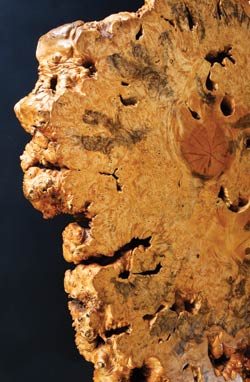
George Nakashima was an interpreter of trees, listening to the voice of nature and translating wood and bark into timeless furniture.
That’s part of the allure of Nakashima (1905-1990), the iconic artisan whose sinuous, realistic studies attract a growing crop of admirers.
“One of the enduring qualities of his work is his ability to communicate his love of wood to other people,” says Robert Aibel, who sells Nakashima furniture at Moderne Gallery in Philadelphia. “He made furniture that people live with – the dining room table where you eat, the rocker where you nurse your baby.” Nakashima was the most prolific and best-known figure of the American Studio Furniture Movement (1940-1990), an artistic renaissance born in the City of Brotherly Love that promoted craft as an antidote to mass-produced modern furniture. Nakashima’s workshop in nearby New Hope, Pa., produced 25,000 pieces ranging from two-legged Conoid chairs to the massive Peace Table at the Cathedral of John the Divine in Manhattan. Matt Freeman, who grew up a few miles from the studio, was raised with Nakashima furniture his parents used and enjoyed every day. He remembers the list of pieces getting taller as he did, eventually including a dining room table and chairs, end tables, cabinets and shelves.
“My parents weren’t overly protective about the furniture, but all the pieces are in pristine shape today, 40 years later,” he said. “Even as kids we had this quiet respect for the way they were made … They’d just sort of sit there quietly glowing. We’d set down our soda glasses and sticky lollipops somewhere else, not on the Nakashima.”
Like children, each tree has its own personality. Nakashima was the first to embrace the knotholes, fissures and splits in wood as wondrous expressions of nature rather than imperfections. While most furniture makers discard the thin, irregular ends of slabs, Nakashima integrated them into his designs. Known as “free edges,” those elements are factors in determining the value of a piece. Basically, the more free edges, the greater the value.


